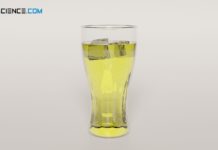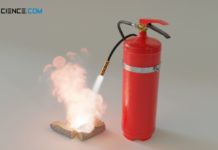Richmann’s law of mixtures describes the final temperature resulting in thermodynamic equilibrium when two bodies with different initial temperatures are brought into contact.
Adiabatic mixing
If two bodies with different initial temperatures are brought into contact with each other, the temperatures will become more and more equal. Eventually, thermodynamic equilibrium will be reached. The temperatures have then completely equalized and a common final temperature has been established, which is also referred to as the mixing temperature.
One can observe such an equalization of temperatures, for example, when pouring hot water into a cold glass. While the glass is heated by the hot water, the water cools down on the relatively cold glass. After some time, the different initial temperatures have equalized and the glass has the same temperature as the water inside it. The final temperature lies between these two initial temperatures.
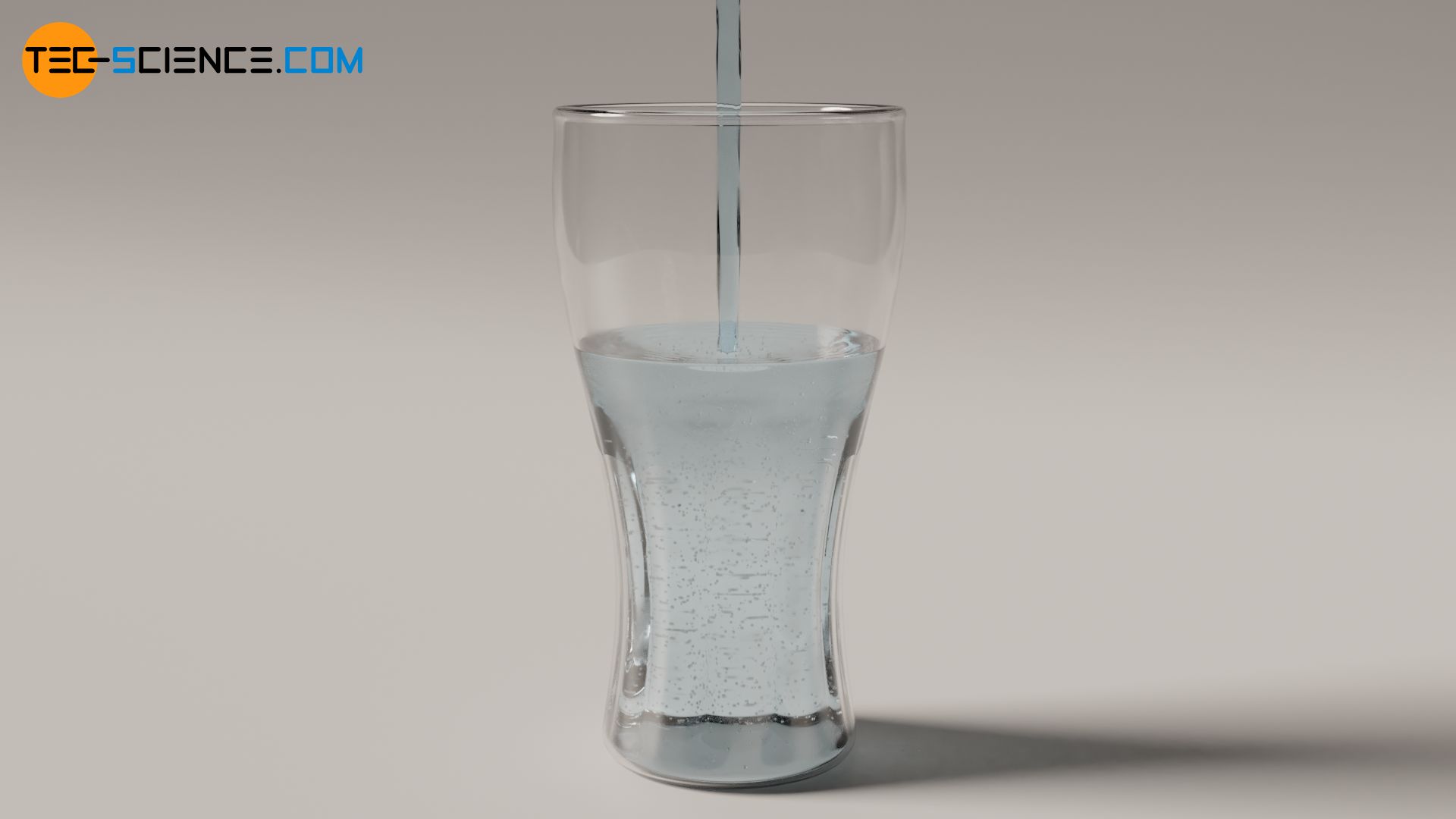
Depending on how much water is poured into the glass, the final temperature is shifted towards higher or lower values. With a larger amount of water, it can be assumed that higher final temperatures result, since more hot water is present and causes greater heating of the glass. The equalization of temperatures can be explained using the particle model. This is discussed in detail in the article Heat and thermodynamic equilibrium.
In the following, it will be shown how the final temperature can be determined when two bodies are in thermal contact with each other. It is assumed that heat is only transferred between the two considered bodies. Heat transfer to the surroundings is thus neglected. Such a thermal mixing process neglecting an unwanted heat transfer to the surroundings is also called an adiabatic mixing (the term adiabatic system is explained in more detail in the article Thermodynamic systems).
Derivation of the formula for calculating the final temperature
The basic relationship between transferred heat Q and temperature change ΔT of a body is given by the heat capacity C of the considered object
\begin{align}
\label{q}
\boxed{Q = C \cdot \Delta T}~\text{,} \\[5px]
\end{align}
where the heat capacity C for a homogeneous body can be determined from the specific heat capacity c of the substance and its the mass m:
\begin{align}
\label{c}
&\boxed{C = c \cdot m} \\[5px]
\end{align}
In the following, we will consider the example of hot water and a colder glass. If the hot water is poured into the cool glass, then heat is transferred from the water to the glass. This causes the glass to heat up due to absorbed heat. At the same time, the water cools due to the heat given off. The amount of heat emitted by the water (Qw) is equal to the amount of heat absorbed by the glass (Qg):
\begin{align}
\label{e}
Q_\text{g} = Q_\text{w} \\[5px]
\end{align}
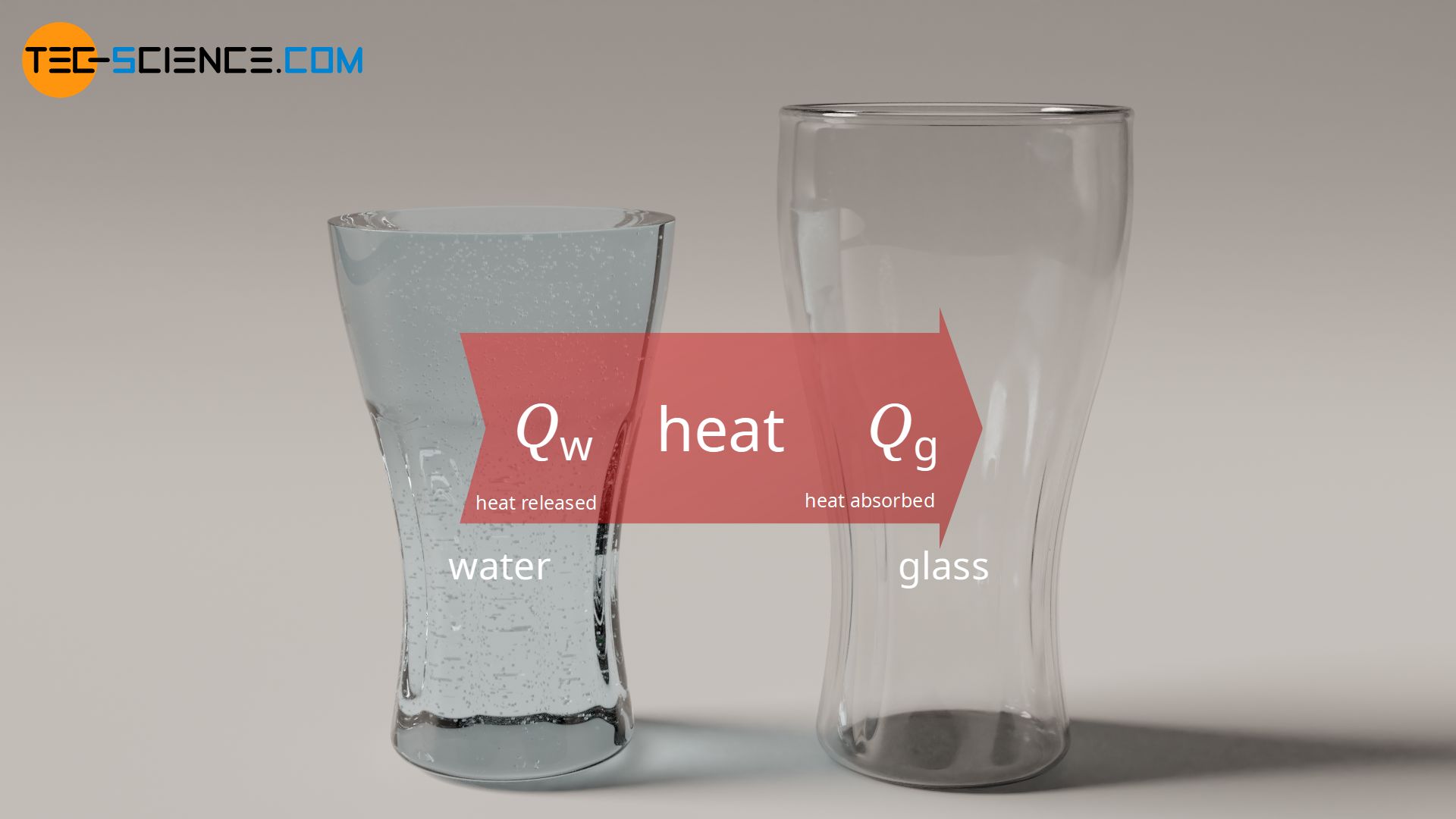
Note that heat transfer to the surroundings has been neglected and, for reasons of energy conservation, the heat emitted by the water must therefore be completely absorbed by the glass.
The heat Qw emitted by the water causes the temperature of the water to decrease by a certain amount ΔTw according to equation (\ref{q}). For a given initial temperature Tw, the heat given off can be determined as follows when a common final temperature Tf has been established in thermal equilibrium:
\begin{align}
Q_\text{w} = C_\text{w} \cdot \underbrace{\left( T_\text{w}-T_\text{f}\right)}_{\Delta T_\text{w}>0} \\[5px]
\end{align}
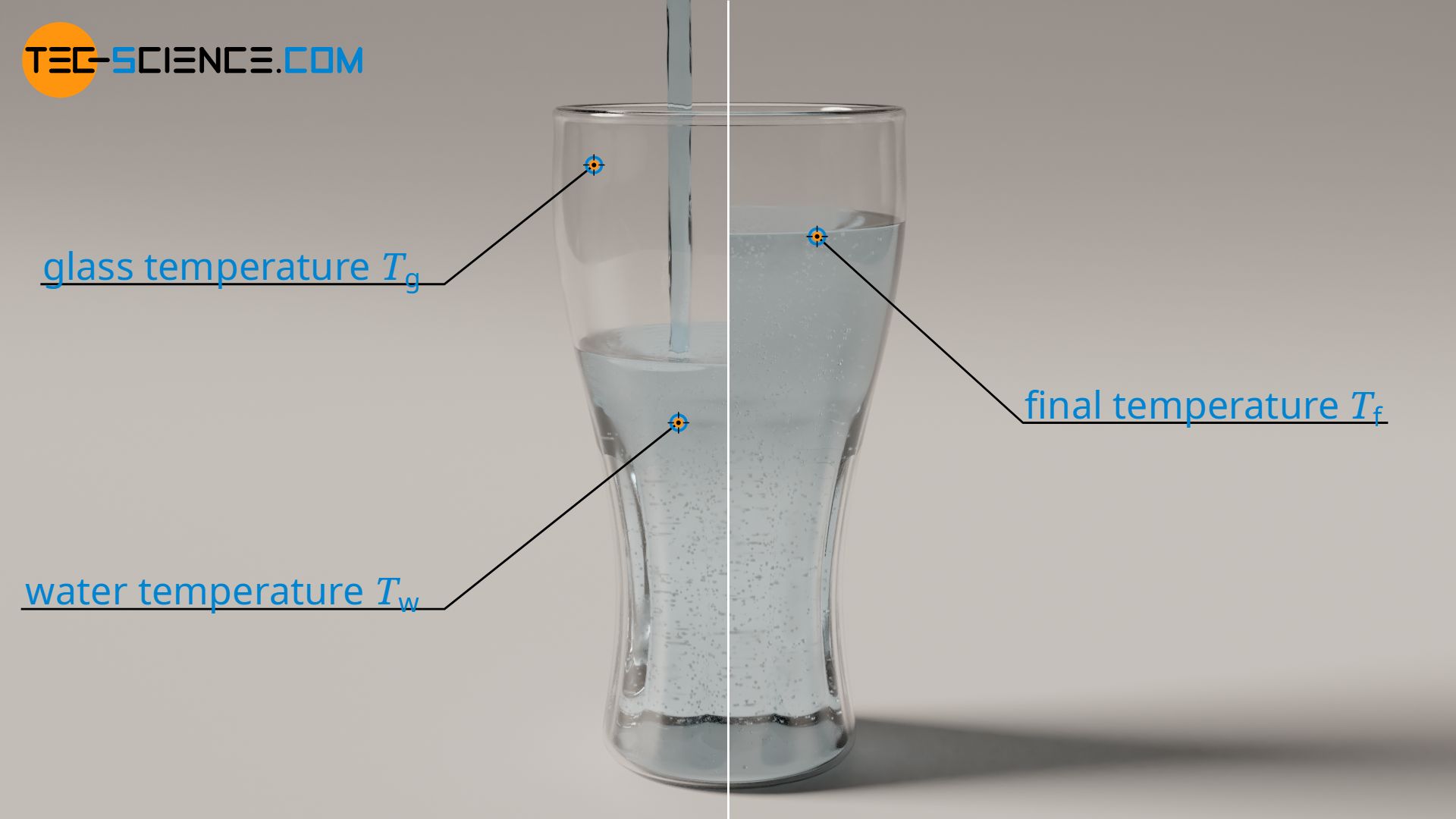
In the analogous way, the absorbed heat by the glass Qg can be determined on the basis of the initial temperature Tg and the final temperature Tf:
\begin{align}
Q_\text{g} = C_\text{g} \cdot \underbrace{\left( T_\text{f}-T_\text{g}\right)}_{\Delta T_\text{g}>0} \\[5px]
\end{align}
Note that the initial temperature of the water is greater than the final temperature, while the initial temperature of the glass is lower than the final temperature (Tw>Tf>Tg). The temperature differences in the two upper equations were therefore chosen to give positive values for the amounts of heat in each case. In this way, the amounts of heat can now be equated according to equation (\ref{e}) and solved for the final temperature:
\begin{align}
Q_\text{g} &= Q_\text{w} \\[5px]
C_\text{g} \cdot (T_\text{f} – T_\text{g})&= C_\text{w} \cdot (T_\text{w} – T_\text{f}) \\[5px]
C_\text{g} \cdot T_\text{f} – C_\text{g} \cdot T_\text{g} &= C_\text{w} \cdot T_\text{w} – C_\text{w} \cdot T_\text{f}\\[5px]
C_\text{g} \cdot T_\text{f} +C_\text{w} \cdot T_\text{f} &= C_\text{w} \cdot T_\text{w} + C_\text{g} \cdot T_\text{g} \\[5px]
T_\text{f} \cdot (C_\text{w} +C_\text{g}) &= C_\text{w} \cdot T_\text{w} + C_\text{g} \cdot T_\text{g} \\[5px]
T_\text{f} &= \frac{C_\text{w} \cdot T_\text{w} + C_\text{g} \cdot T_\text{g}}{C_\text{w} +C_\text{g}} \\[5px]
\end{align}
\begin{align}
\label{tm}
\boxed{T_\text{f} = \frac{C_\text{w} \cdot T_\text{w} + C_\text{g} \cdot T_\text{g}}{C_\text{w} +C_\text{g}}} \\[5px]
\end{align}
For homogeneous substances, equation (\ref{c}) can be used in equation (\ref{tm}) to determine the final temperature on the basis of the specific heat capacities c and the masses m of the substances:
\begin{align}
\boxed{T_\text{f} = \frac{c_\text{w} \cdot m_\text{w} \cdot T_\text{w} + c_\text{g} \cdot m_\text{g} \cdot T_\text{g}}{c_\text{w} \cdot m_\text{w} + c_\text{g} \cdot m_\text{g}}} \\[5px]
\end{align}
Numerical example
In the following, the final temperature is to be determined on the basis of concrete values. We assume a glass with a mass of mg = 100 g. The specific heat capacity of glass can be assumed to be cg = 0.72 kJ/(kg⋅K). The initial temperature of the glass is room temperature with Tg = 293 K (20 °C). Now 200 ml of water with a mass of mw = 200 g is poured into the glass. The initial temperature of the water is Tw = 333 K (60 °C). The specific heat capacity of water can be assumed to be cw = 4.2 kJ/(kg⋅K).
In fact, it makes no difference at this point whether the temperatures are used in the unit degrees Celsius or in the unit Kelvin in the upper formula for calculating the final temperature. If the temperatures are used in the unit degrees Celsius, the final temperature also results in the unit degrees Celsius. If, on the other hand, the temperatures are used in the unit Kelvin, the final temperature also results in the unit Kelvin.
We use the temperatures in the unit degree Celsius and obtain in this way a final temperature of Tf = 56.8 °C:
\begin{align}
\underline{T_\text{f}} = \frac{4.2 \tfrac{\text{kJ}}{\text{kg K}} \cdot 100 \text{ g} \cdot 60 \text{ °C} + 0.72 \tfrac{\text{kJ}}{\text{kg K}} \cdot 200 \text{ g} \cdot 20 \text{ °C}}{4.2 \tfrac{\text{kJ}}{\text{kg K}} \cdot 200 \text{ g} + 0.72 \tfrac{\text{kJ}}{\text{kg K}} \cdot 100 \text{ g}} = \underline{56.8 \text{ °C}}\\[5px]
\end{align}
The water obviously cools down by only 3.2 °C, while the glass heats up by 36.8 °C. This is due to the significantly greater heat capacity of the water, which is caused on the one hand by the greater mass and on the other hand by the significantly higher specific heat capacity. If only 20 ml of water were added, a final temperature of 41.5 °C would result. In this case, the heat capacities of water and glass are approximately equal and the temperature of the water decreases by the same amount as the temperature of the glass increases (for more information see section Special cases of Richmann’s law of mixtures).
Extending to any two bodies in thermal contact
The formula for calculating the final temperature was derived using the example of water and glass. However, this formula can be transferred to any two substances. It does not matter whether it is a solid and a liquid or two solids that are brought into thermal contact. This relationship also applies to mixtures of two liquids!
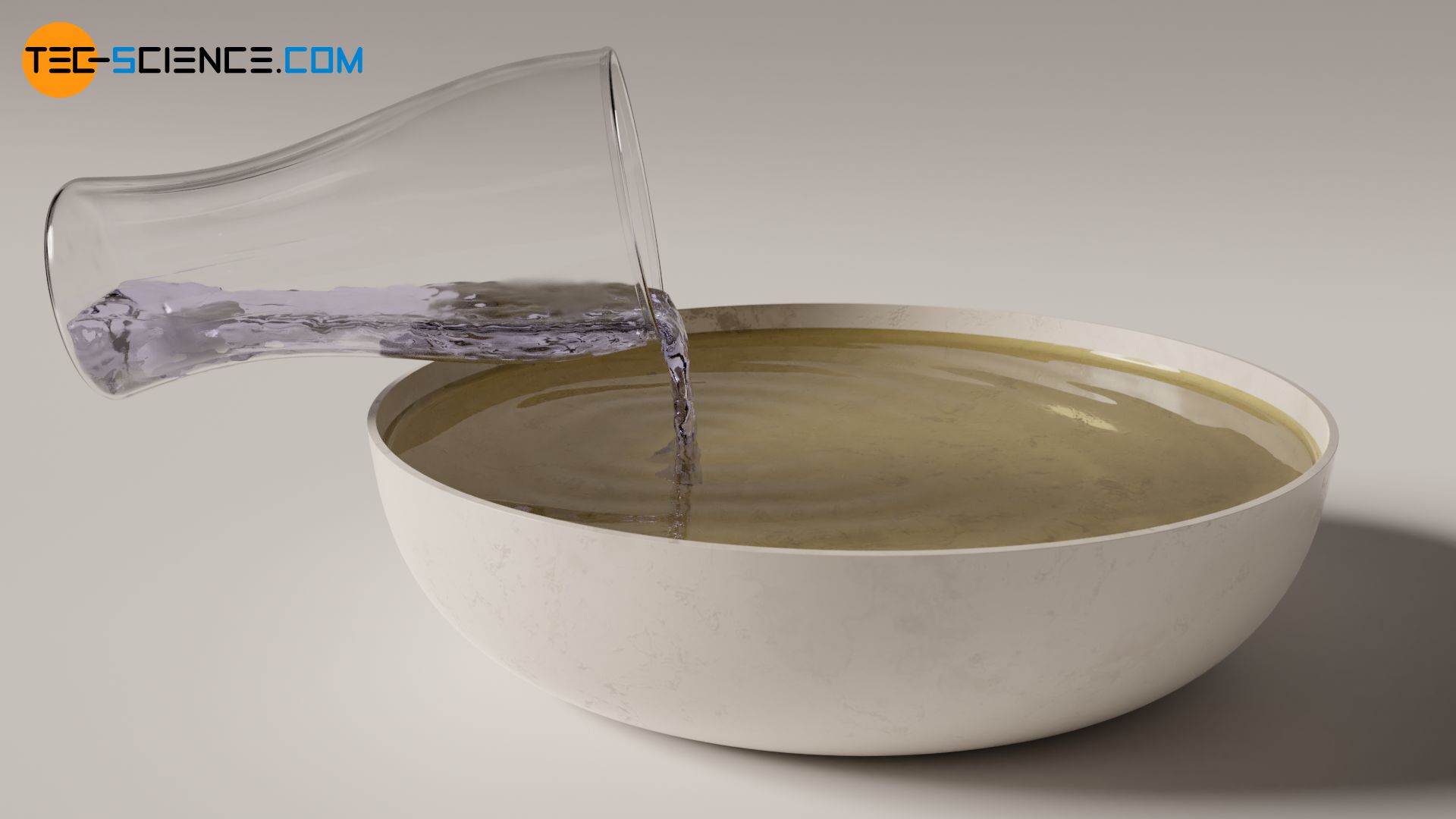
Therefore, in general, the final temperature Tf in thermodynamic equilibrium for any two bodies (1) and (2) with different initial temperatures T1 and T2 and different heat capacities C1 and C2 can be calculated using the following formula:
\begin{align}
\label{rr}
&\boxed{T_\text{f} = \frac{C_{1} \cdot T_{1} + C_{2} \cdot T_{2}}{C_{1} +C_{2}}} \\[5px]
\end{align}
For bodies consisting of homogeneous substances, the heat capacities can be determined from the specific heat capacities c and their masses m:
\begin{align}
&\boxed{T_\text{f} = \frac{c_1 \cdot m_1 \cdot T_{1} + c_2 \cdot m_2 \cdot T_{2}}{c_1 \cdot m_1 +c_2 \cdot m_2}} \\[5px]
\end{align}
These two equations are also known as Richmann’s law of mixtures! For the use of this formula it does not matter which of the two bodies (1 or 2) is the warmer and which is the colder. It should also be mentioned again that the temperatures do not necessarily have to be used in the unit Kelvin, but can also be used in the unit degrees Celsius.
The validity of Richmann’s law must be limited for the case of phase transitions that occur during the equalization of temperatures. This would be the case, for example, when ice cubes are poured into a warm beverage. In these cases, (latent) amounts of heat due to the change in the state of matter must also be taken into account (heat of fusion).
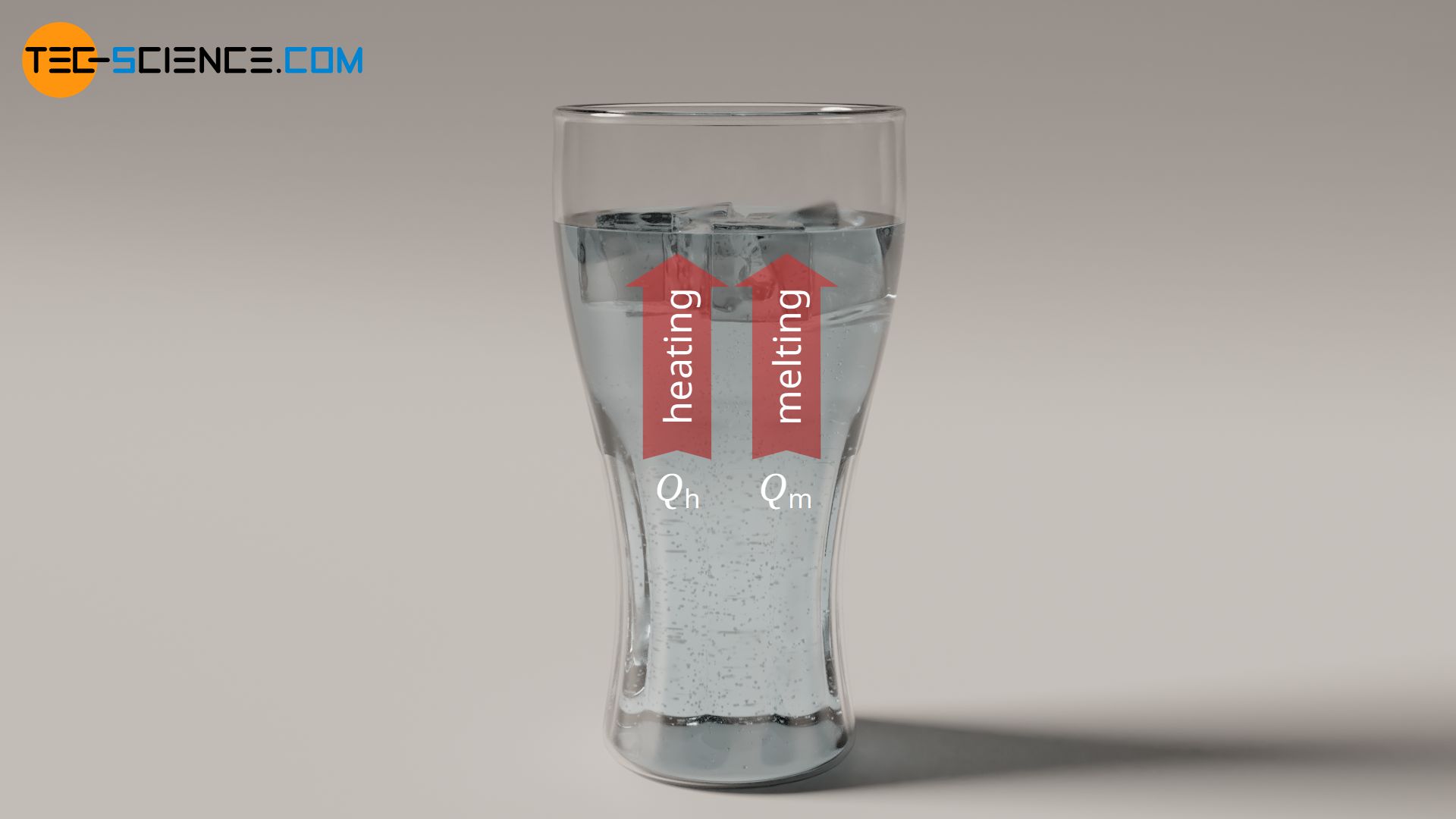
Richmann’s law of mixtures describes the resulting final temperature when two bodies with different initial temperatures are brought into thermal contact, provided that no phase transition occurs and it is assumed that heat is transferred only between these two bodies!
It can be seen from a closer look at equation (\ref{rr}) that the final temperature results from the weighted arithmetic mean of the initial temperatures, where the weighting is done by the heat capacities! Depending on the heat capacity, the final temperature therefore shifts to higher or lower values.
Note that in practice, when two bodies are brought into thermal contact, the heat energy transferred from the hotter body does not completely benefit the cooler body. A certain part of the heat energy emitted is also transferred to the surroundings. In the case of mixing two liquids in a vessel, a part of the heat is also transferred to the vessel. The final temperature of two bodies will therefore be lower than the theoretically calculated final temperatures due to these (unwanted) heat losses.
Special cases of Richmann’s law of mixtures
When mixing two identical substances (for example when pouring hot water into cold water), the specific heat capacities are identical (c1=c2=c), so that the final temperature Tf is independent of these specific heat capacities. That means, no matter which substances are brought into thermal contact with each other, as long as they are identical the final temperature will be the same in all cases!
\begin{align}
\require{cancel}
&T_\text{f} = \frac{\bcancel{c} \cdot m_1 \cdot T_{1} +\bcancel{c} \cdot m_2 \cdot T_{2}}{\bcancel{c} \cdot m_1 + \bcancel{c} \cdot m_2} \\[5px]
&\boxed{T_\text{f} = \frac{m_1 \cdot T_{1} + m_2 \cdot T_{2}}{m_1 + m_2}} ~~~\text{only applies for identical substances}\\[5px]
\end{align}
If, furthermore, the masses of the two substances are equal (m1=m2=m), the final temperature Tf results from the arithmetic mean of the initial temperatures (average temperature):
\begin{align}
&T_\text{E} = \frac{m \cdot T_{1} + m \cdot T_{2}}{m + m} \\[5px]
&\boxed{T_\text{f} = \frac{T_{1} + T_{2}}{2}} ~~~\text{only applies to identical substances with the same mass} \\[5px]
\end{align}

